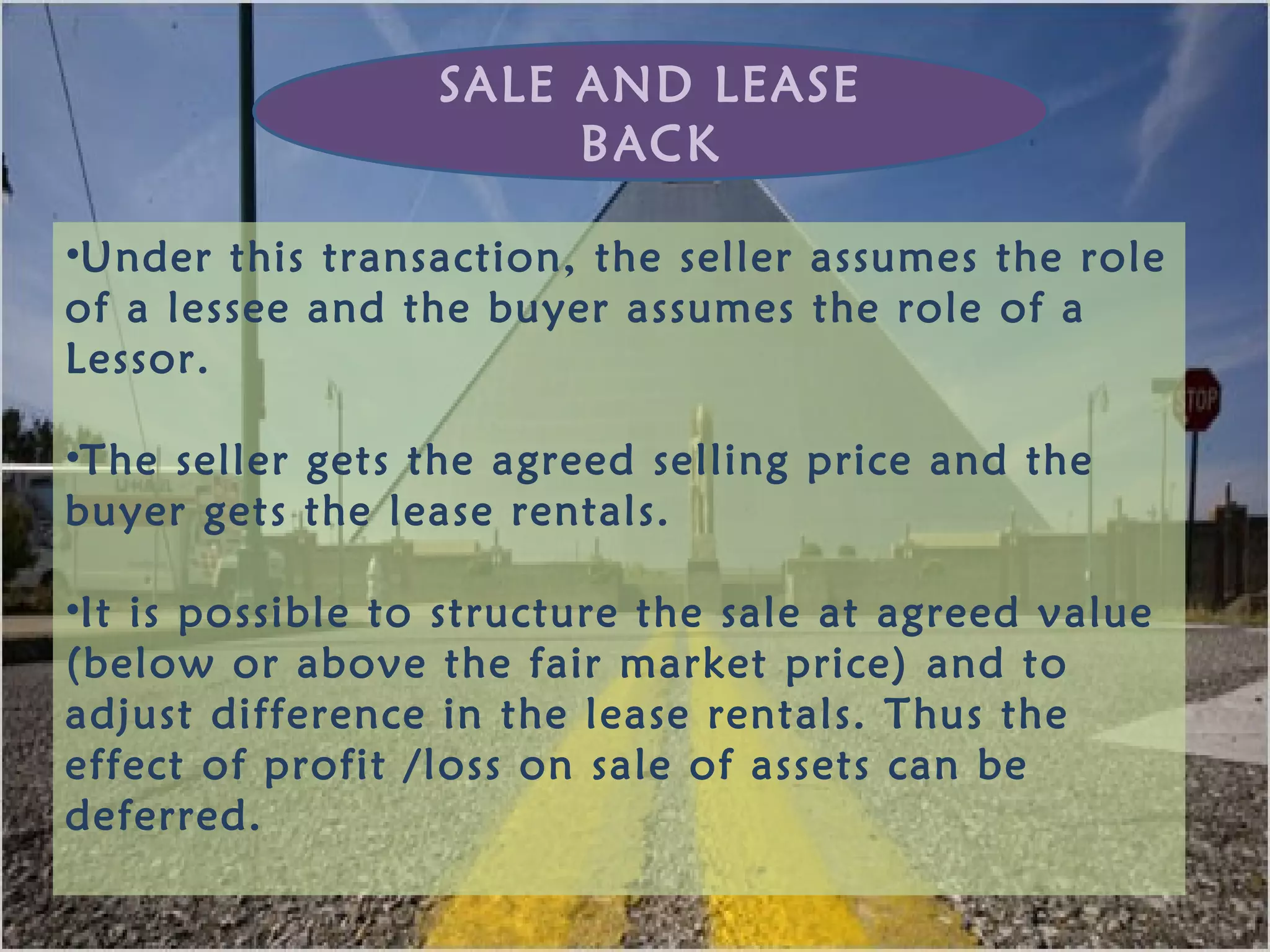- Leasing is a commercial arrangement where an equipment owner conveys the right to use equipment to a user (lessee) in return for rental payments. There are different types of lease agreements such as financial leases, operating leases, sale and lease back, leveraged leasing, direct leasing, sub-leasing, and wet/dry leasing.
- Financial leases involve the transfer of risks and benefits of asset ownership to the lessee, who has the option to purchase the asset at the end of the lease. Operating leases give limited use rights and the asset remains with the lessor.
- Leasing provides advantages like saving capital, flexibility, tax benefits, and improved liquidity


































